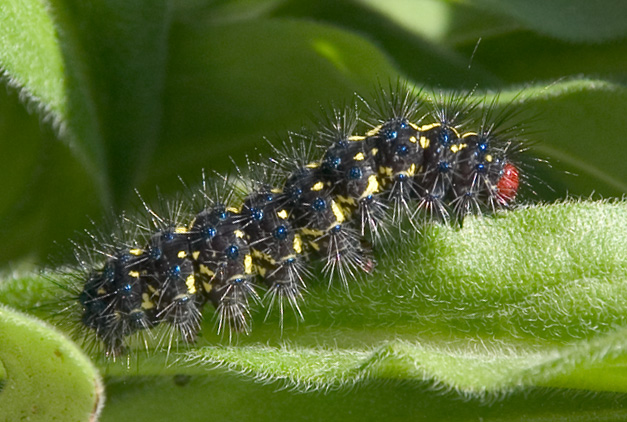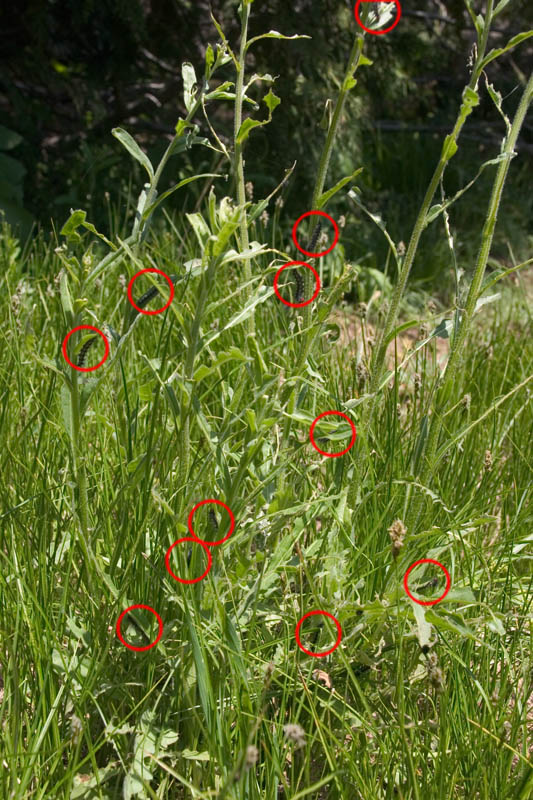Carl_Constantine wrote:Most of those "spines" are for looks to would be predators.
True enough -- that's what makes the exceptions so interesting and memorable!
I grew up about 6 miles south of British Columbia, on the east side of the Cascades. In that area, the only stinging caterpillars were
Hemileuca, and they were so rare that I only ever saw one bunch of them and didn't know what they were. My mom was always nervous of my habit of petting all the caterpillars, but as far as I know that all traced back to only one incident of seeing a large caterpillar that was almost certainly
Hemileuca hera get dropped/rubbed onto one of her schoolgirl friends. The kid reacted pretty intensely; I gather the experience made quite an impression on everybody around.
In your area around Victoria, BC, I can't think of any caterpillars that would sting, either.
In other areas, life gets more interesting. For example in southeastern US, there is the Puss Caterpillar. I've never encountered one, though I'd like to, from a distance. The excellent article
"Some Stinging Caterpillars on Shade and Ornamental Trees" has this to say:
The puss caterpillar...is densely clothed with long, fine, tan or grayish to brown hairs, and appears docile and harmless. However, concealed within its furry coat are venomous setae which, on contact with skin, produce severe reactions: intense burning or nettling; inflammation and development of pustules and lesions; numbness and swelling; intense pain; and nausea. Victims of puss caterpillar stings sometimes require medical attention.
The same article discusses numerous other stinging caterpillars, including the Buck moth (another
Hemileuca) and the Saddleback (packsaddle), which it rates about equal to each other and much less severe than the Puss Caterpillar.
It's probably worth mentioning that to dismiss spines as being "for looks" may miss a lot of the story. By far the most dangerous enemies for most caterpillars are other insects -- both straightforward predators and the parasitoids like Tachinid flies and Ichneumon wasps. I've watched spiny caterpillars twitch around when being probed, and my impression was that the flailing array of spines made a pretty effective barrier, far from just a matter of looks. And the next predators up are birds. I haven't spent a lot of time researching this, but offhand I'd guess that the mouth of a typical bird is a lot more easily stung than the skin on my hands. We should probably see how the usual targets react, before writing off a defense as being for show.
In any case, all this talk of spines begs a question. How come some caterpillars have spines, some have dense hairs, and some are completely smooth and naked? To which I can only say, "Some questions too hard -- I don't have a clue!"
--Rik




